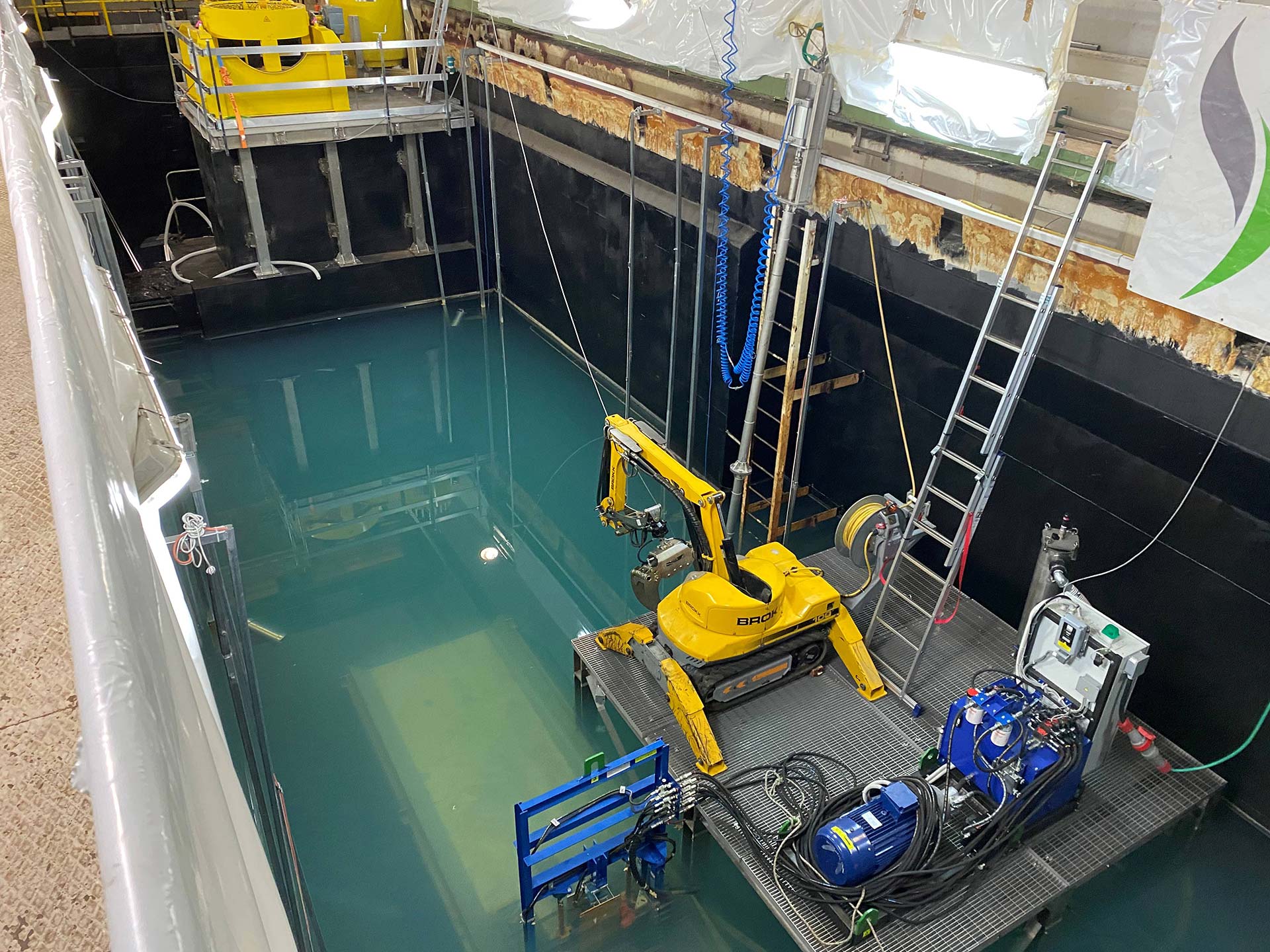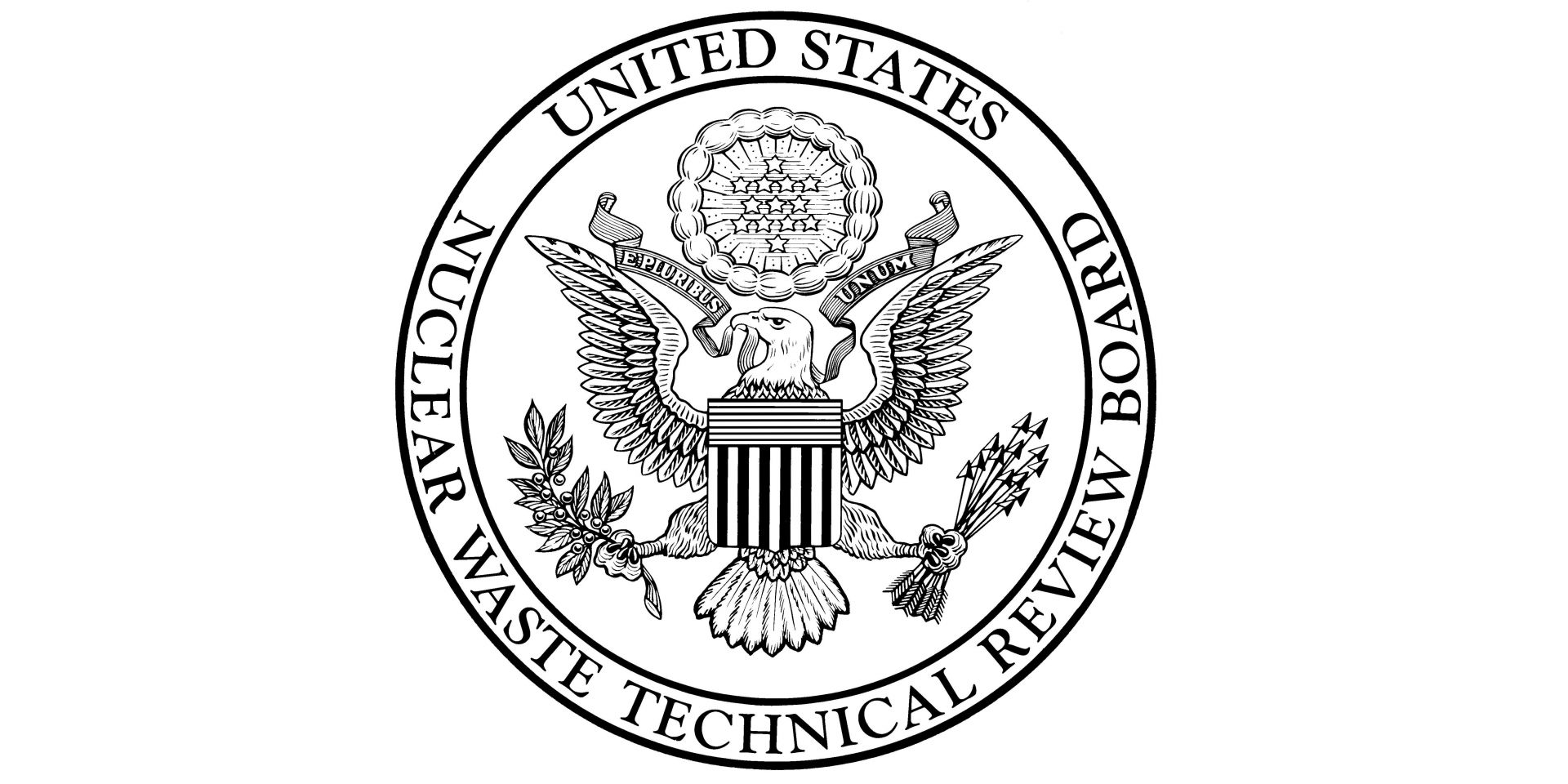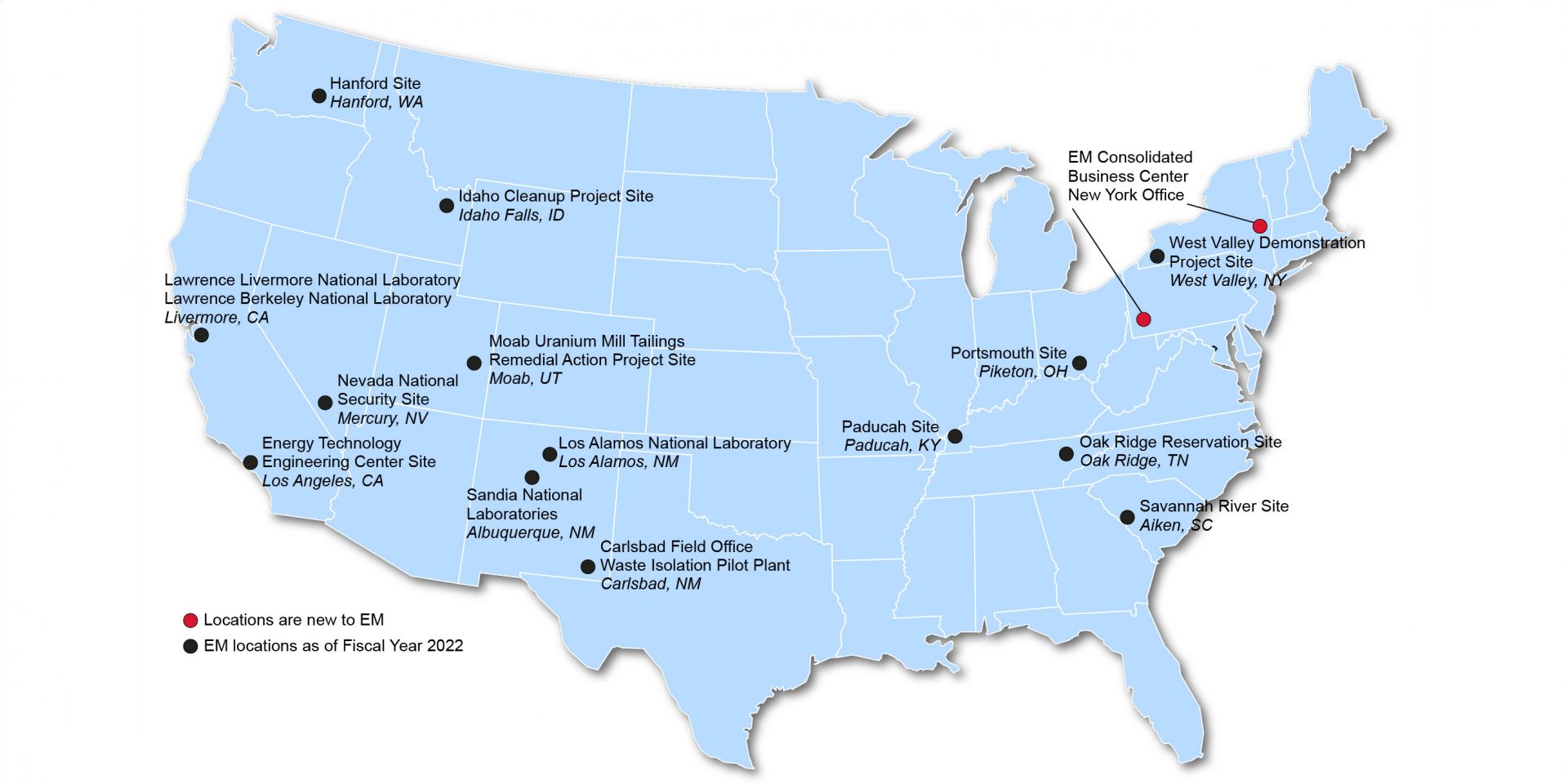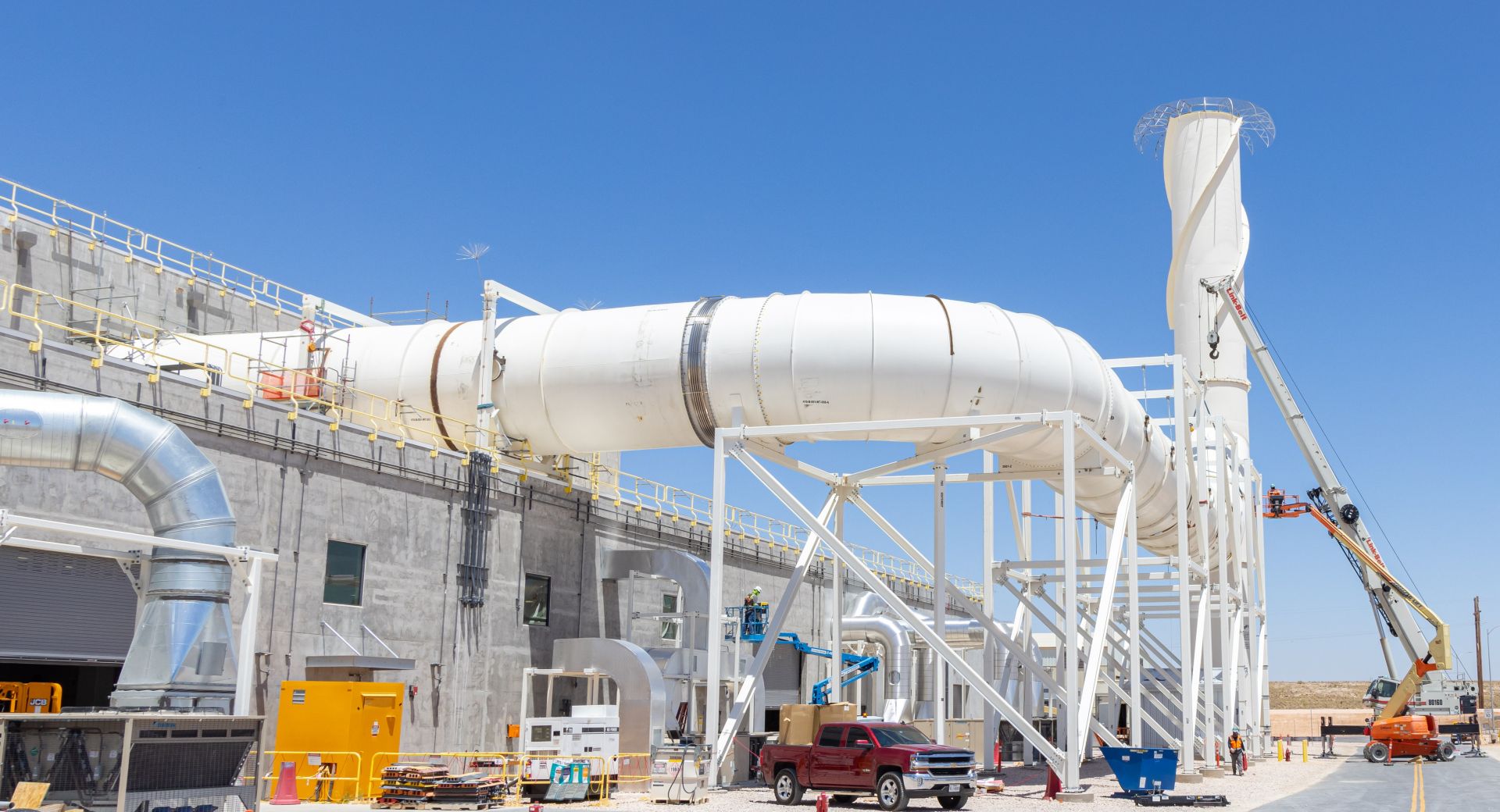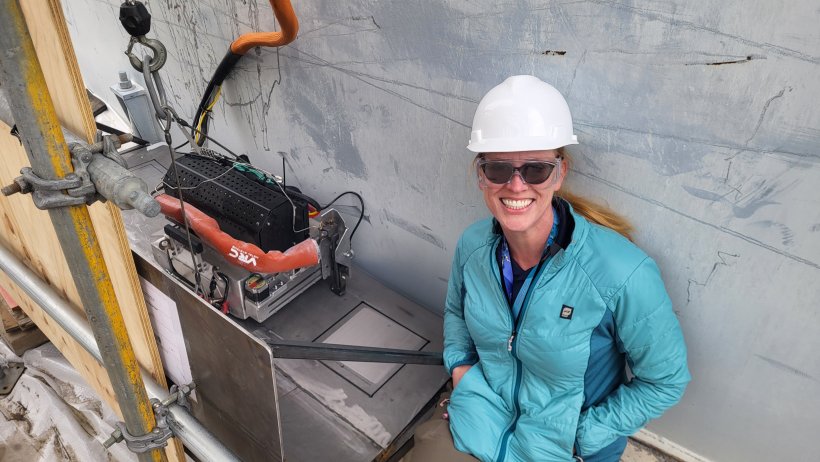Remote equipment is used to remove components from the Garigliano reactor vessel. (Photo: Sogin)
Sogin (Società Gestione Impianti Nucleari), the state-owned company responsible for the decommissioning of Italy’s nuclear plants and the management of radioactive waste, announced on July 30 that it has completed the first phase of dismantling Garigliano nuclear power plant’s reactor vessel with the removal of contaminated metal components from the deflector.
The Atlas railcar carries a simulated shipment of spent nuclear fuel during testing in September 2023. (Photo: DOE)
The Department of Energy has issued a request for information to gather input on its proposed package performance demonstration, which is intended to demonstrate the robustness of spent nuclear fuel transportation casks in hypothetical accident conditions. By simulating severe accident scenarios, the DOE said it intends to show to the public and stakeholders the safety and reliability of transporting SNF by rail, heavy-haul truck, and barge.
The original 1950s-era condenser is lifted out of the GPE system by a 100-ton crane at SRS's H Canyon chemical separations facility. (Photo: DOE)
Workers at the Savannah River Site have recently completed the replacement of a piece of equipment that the Department of Energy said in a July 31 press release is “essential for operations in the site’s H Canyon chemical separations capable facility.”
A June 2024 photo shows solid waste inside the single-shell Tank A-101 at the Hanford Site’s A Tank Farm. (Photo: DOE)
Work crews have started retrieval of radioactive and chemical waste from a third set of underground storage tanks at the Hanford Site, according to the Department of Energy's Office of Environmental Management. Contractor Washington River Protection Solutions (WRPS) is retrieving and transferring more than 325,000 gallons of waste from the single-shell Tank A-101 at the site's A Tank Farm. The waste is being sent to a newer double-shell tank for continued safe storage.
Retrieval activities began one month after workers emptied the site’s 21st single-shell tank. Waste removed from the 21 tanks totals about 3 million gallons.
Locations of DOE-EM cleanup sites. (Map: GAO)
Despite efforts to increase hiring, the Department of Energy’s Office of Environmental Management continues to be understaffed, according to a recent Government Accountability Office report. The GAO found that, at the end of fiscal year 2023, DOE-EM had 263 vacant positions across its headquarters, cleanup sites, and EM Consolidated Business Center—a vacancy rate of 17 percent. The office is responsible for the cleanup of the environmental legacy waste resulting from decades of nuclear weapons production and government-sponsored nuclear energy research.
Engineers in Argonne’s Chemical and Fuel Cycle Technologies Division. (Photo: Argonne National Laboratory)
Oklo Inc. announced that it has completed the first end-to-end demonstration of its advanced fuel recycling process as part of an ongoing $5 million project in collaboration with Argonne and Idaho National Laboratories. Oklo’s goal: scaling up its fuel recycling capabilities to deploy a commercial-scale recycling facility that would increase advanced reactor fuel supplies and enhance fuel cost effectiveness for its planned sodium fast reactors.
The NWMO’s Laurie Swami (center right) congratulates Ignace mayor Kim Baigrie (center left) on the community’s confirmation of its willingness to host a deep geologic repository for Canada’s spent nuclear fuel. (Photo: NWMO)
The township of Ignace in northwestern Ontario has indicated its willingness to host a potential deep geologic repository for Canada’s spent nuclear fuel. The town council voted unanimously on July 10 to pass a resolution indicating its willingness to participate in the Nuclear Waste Management Organization’s (NWMO's) process for selecting a repository site, making it the first Canadian community to officially move forward with the next phase of a site selection process that began in 2010.
Workers at the Hanford Site’s WTP unload a tanker truck carrying sodium hydroxide. (Photo: DOE)
Workers at the Department of Energy’s Hanford Site in Washington state recently unloaded a shipment of more than 10,000 gallons of sodium hydroxide delivered to the site’s Waste Treatment and Immobilization Plant (WTP). The liquid sodium hydroxide will be the first chemical fed into the plant’s melters to simulate Hanford’s radioactive and chemical tank waste.
Concept art of Holtec’s proposed HI-STORE CISF in New Mexico. (Image: Holtec)
Holtec International announced that it has petitioned the U.S. Supreme Court to overturn the Fifth Circuit’s March 2024 ruling that vacated the license for the company’s HI-STORE consolidated interim storage facility (CISF) for commercial spent nuclear fuel in southeastern New Mexico.
Construction crews finish work on large ductwork for WIPP’s new SSCVS facility. (Photo: DOE)
The Department of Energy’s Office of Environmental Management announced that it has completed construction of the new large-scale ventilation system at its Waste Isolation Pilot Plant in New Mexico.
All major concrete placements have been completed on Saltstone Disposal Unit 10, the latest megavolume disposal unit being built at the Savannah River Site. This aerial view shows the final roof section being installed on the unit. (Photo: DOE-EM)
With the placement of 25 wall sections, 208 support columns, and 7 roof sections, work crews have completed all major concrete placements for the megavolume Saltstone Disposal Unit (SDU) 10 at the Savannah River Site in South Carolina, according to the Department of Energy’s Office of Environmental Management.
Stephanie Doll of WRPS poses next to the metal patch applied during the demonstration. (Photo: DOE)
The Department of Energy’s Office of Environmental Management and its contractor Washington River Protection Solutions (WRPS) recently demonstrated the use of cold spray technology as a means of refurbishing double-shell waste tanks at the Hanford Site in Washington state. The tanks store liquid radioactive and chemical waste that was created during Hanford’s plutonium production era.
